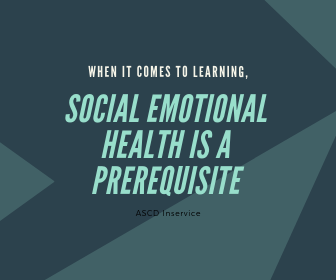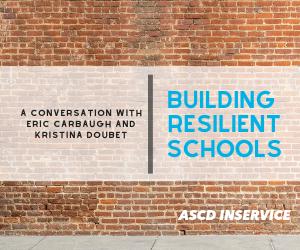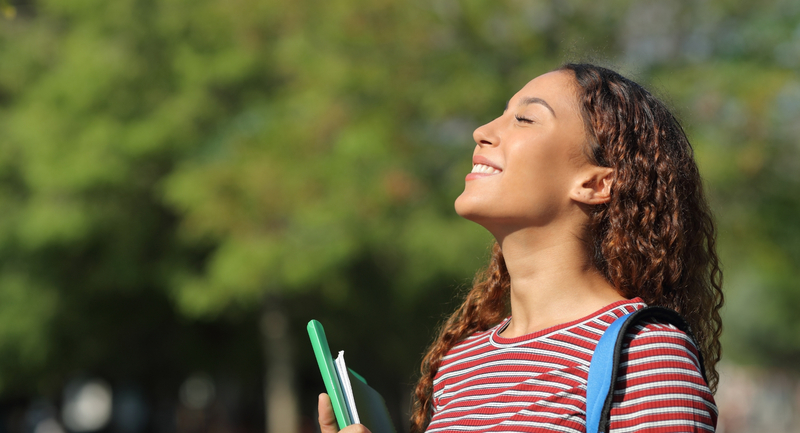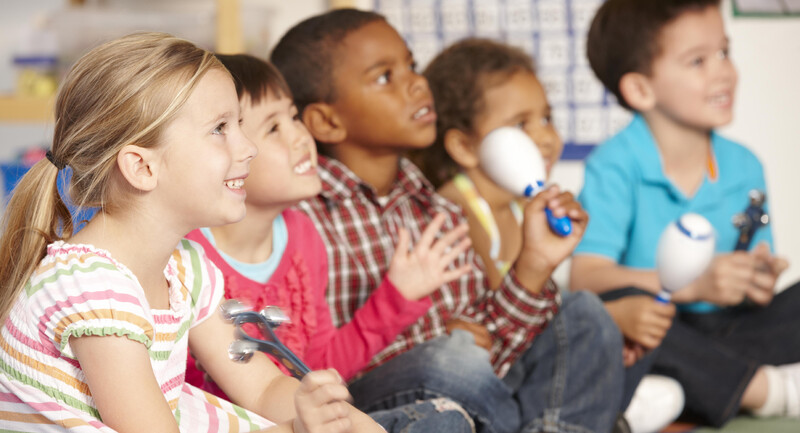Written by Chelsea Thornton
In our classrooms and schools, there are many things we cannot control. We cannot change the kinds of homes or economic situations our students come from, the trauma they have faced in the past, or the challenges they likely face in the future. But, to a great extent, we can control our school and classroom environments, and we can use them to teach students coping strategies and skills that will help them achieve both academic and real-world success. This is the goal of social-emotional learning.
The nature and quality of the school environment are known as school climate. The four main areas of school climate are safety, relationships, the teaching and learning environment, and school processes and environment. These factors are not independent of each other but instead often overlap and support each other. For example, building relationships among students and teachers, and having consistent norms in place helps develop a sense of safety. If students feel safe and they have strong relationships with their peers and teachers, they are more likely to engage in the teaching and learning, and the overall school environment.
Social-emotional learning, then, is the first step toward developing a positive school climate, which can lead to fewer behavior problems, stronger social-emotional health, and higher academic motivation and achievement, especially for those populations that are more likely to struggle in school. The Collaborative for Academic, Social, and Emotional Learning (CASEL) defines social-emotional learning as “the process through which children and adults acquire and effectively apply the knowledge, attitudes, and skills necessary to understand and manage emotions, set and achieve positive goals, feel and show empathy for others, establish and maintain positive relationships, and make responsible decisions.” For years, many of us in education have assumed that these things are taught at home, that they are innate, or that we just don’t have time to bother with them. Luckily, we’re realizing in education that all of those assumptions were, well, wrong.
There is perhaps no better place to observe the impact that social-emotional learning can make than an alternative high school. These students typically come to us with a history of academic failure, challenging home lives, and long discipline records. They exhibit higher rates of depression and substance abuse, yet they perceive their schools as more caring, more supportive, providing more services, and being more welcoming (Austin & Bailey, 2008). The structure and features of alternative high school programs vary widely, but the small class sizes and individualized approach allow staff the time and resources to incorporate social-emotional learning into their day-to-day routines.
At Albert Powell High School, a model continuation school in Yuba City, California, the staff of 20 is dedicated to promoting student confidence in their intellectual, social, and emotional abilities. Students come to Albert Powell for many reasons, including credit deficiency, mental health issues, work schedules, and illness. Enrollment fluctuates between 150 and 200, about 85 percent of students are designated as socioeconomically disadvantaged, and one-third of them have a parent without a high school diploma. At Albert Powell, social-emotional learning starts from day one, when students enter the school with a four-week orientation class that reviews the credit recovery program, the science of growth mindset, behavior expectations, mindfulness strategies, the escalation cycle, strategies for goal setting, and the elements of Powell PRIDE: Positivity, Responsibility, Integrity, Dedication, and Engagement.
After students leave orientation, there are a variety of programs in place to continue social-emotional learning. Advisory time is built into the weekly class schedule, allowing teachers to facilitate team building, enrichment activities, and discussions on topics such as SMART goals and self-care. For students who need extra social-emotional support, there are several weekly groups available. The Men’s Council supports healthy relationships among male peers and authority figures, and there is a similar group for young women on campus. There is also a self-sabotage group, a stress and anxiety management group, a grief group, and a teen parenting group.
These social-emotional learning opportunities and supports are paired with incentives that reward not only academic successes but also social-emotional victories. Staff members nominate students for weekly Cheesy Gifts based on their Powell PRIDE, students who meet their credit goals go on special field trips, teachers send positive postcards home, and students who are within 30 credits of their diploma earn Grad in Progress (GIP) t-shirts. Graduates are announced over the loudspeaker as staff and peers cheer and clap.
As with anything we try to teach students, modeling is key. The staff at Albert Powell models healthy approaches to failure, frustration, and relationships on a daily basis. Teachers model their thinking through difficult problems or challenges, share their own stories and experiences, and partner with students to help them navigate specific problems or challenges in their lives. Teachers can be seen high-fiving, wearing tie-dye, participating in rally games, playing basketball, having casual conversations at the break, and eating lunch with students on a daily basis. The staff knows that every moment with these students is a teachable one and that they need these social-emotional lessons most of all.
Albert Powell is just one of the many alternative schools that is providing the social-emotional learning opportunities and supports their students need to remove the barriers to their own achievement. You can call it SEL, you can call it PBIS, MTSS, RTI or whatever acronym you like. At the end of the day, it’s about building powerful relationships between students and staff that allow for this kind of learning to happen.
What Albert Powell and many alternative education programs have known all along, and many conventional schools are starting to realize, is that social-emotional health isn’t a luxury of learning, it’s a prerequisite. And until we can ensure that our students’ social-emotional needs are being met, they are going to continue to struggle in academics, behavior, and other areas of their lives.
For this reason, as traditional schools work toward leveraging school climate and social-emotional learning as ways to improve academic achievement, they should look to their local alternative programs. Exploring how these schools are able to foster success for those most at risk for failure could mean a blueprint for a more welcoming school environment, stronger social-emotional development, and better outcomes for students, in school and beyond.
September 4, 2018
•
5 min (est.)







